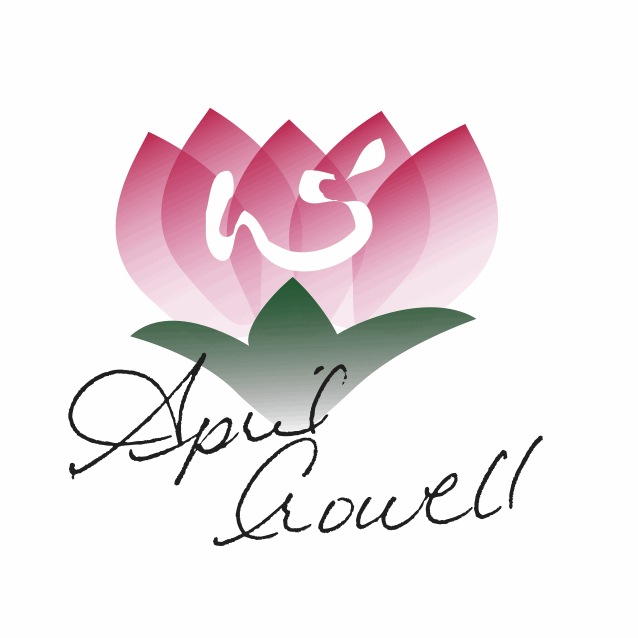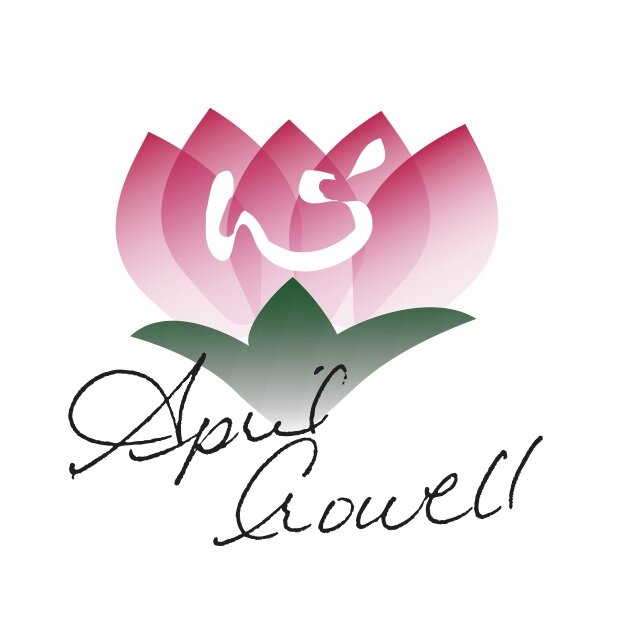Countering Coughs
Have a cough? They are pretty common right now and this time of year I get a fair number of emails or calls with clients that have suddenly come down with a cough.
Maybe the cough is caused by a cold, maybe it's allergies, maybe you have or are recovering from Covid. Ideally, to treat coughs most effectively we want to narrow down the possible reasons and find the cause (the root) while relieving the symptom (the branch).
Whatever the cause, with a cough there are several steps you can take yourself to start relieving the symptoms right now, even before you do a full assessment or knowing the exact root cause. By looking at your own symptoms you can also build greater self awareness and knowledge of patterns to prevent or treat yourself better in the future.
I'm all for educating and empowering my clients.
First, let's start with the idea that if you have a cough, in the eyes of Asian medicine (Chinese medicine) this is merely a symptom. The cough itself, though uncomfortable and unpleasant, is an indicator to a Asian medicine practitioners that something bigger is at play.
In Asian/Chinese medicine all patterns are viewed this way. Five clients can walk in with a headache or some other disharmony and (likely) all will leave with different assessment and treatment plans.
To find out how to most effectively treat the cough, I need to ask a seeming barrage of questions such as -
Is it acute - just came on? Or is it chronic - you've been hacking a while?
Is the cough weak or strong? Is it just a little weak cough or do you terrify your pets with loud hacking?
Is it dry or rattling?
Is there mucus? If so, what color?
Is the cough worse at a particular time of day?
Based on the answers and other assessment tools, like tongue and pulse, listening to the sound of your cough, voice and breathing, a pattern emerges that allows for effective assessment and treatment.
A bit about the Lungs
Sometimes I can say absolutes - if you are coughing, your Lungs are absolutely involved. If the pattern is chronic, other organs will likely be involved too. The Lungs hold the distinction of being called "The delicate organs". They have the closest connection to the exterior and are, therefore, most susceptible to an exterior invasion. The Lungs also rule over the throat and the sinuses and they are the organs most responsible for creating our "Wei Qi" or immune systems. Their function of "descending and dispersing" is imperative for moving Qi, Blood and Fluids throughout the body. The Lungs are all about proper mucus and movement of Qi and fluids and they are easily affected by heat, dryness, and phlegm.
Learn more about the Lungs.
A few patterns of coughing according to Asian Medicine
Exterior or Interior?
Exterior — patterns arise from an exterior invasion. You are literally battling off a cold or you might have walked through a massive pollen cloud or walked down the chemical aisle at the grocery store - hack..hack... These patterns of coughing arise quickly (acute) and usually we battle it out and return to our charming selves. Exterior patterns happen because we are either weaker than the pathogen or the pathogen is excessively strong. Left untreated, these patterns can drive deep and to become interior and become a chronic pattern. Bad news - those with chronic Lung or immunity problems will be more susceptible to exterior invasion.
Wind Cold invades the Lungs — Symptoms include tight throat, a weak or soft cough, sneezing, runny nose with clear discharge, muscle aches, occipital headache and chills. Caused by excess exposure to cold, wind, draft, sweating in cold conditions, inappropriate dress for the weather or your system was simply weaker in comparison to the exposure. Tongue - possibly quivering, with a thin, clear coating. Pulse - tight and superficial especially in the Lung position. Treatment here focuses on releasing to the exterior, warm the body, strengthen the Lungs and the Wei Qi.
Exterior Wind Heat invades the Lungs —Symptoms include cough with thick, sticky phlegm, fever, perspiration, red and sore throat, aversion to wind, runny nose with yellow discharge, thirst with a desire for cool drinks and a headache...because you weren't miserable enough already. Tongue - red tip and/or edges and a yellow coating. Pulse -floating and rapid. Treatment here is to release exterior, clear heat and resolve phlegm and strengthen the Lungs.
Wind Damp invades the Lungs — Symptoms include sneezing, aversion to cold, occipital headache, no thirst, no perspiration, stuffy and or runny nose with clear watery discharge, itching or tight throat, maybe chills with slight fever and aches. Post nasal drip causing a cough is often a part of this pattern.
Interior pattern coughs are chronic in nature. They arise from disharmonies that have been lingering in the body for some time, of the person suffers from a constitutional weakness. Coughs in this category would include a asthma, or any acute cough pattern that is allowed to linger and develops into a deeper pattern like bronchitis and tuberculosis. Chronic patterns take time to clear, and the sooner you get working on them, the stronger and less susceptible to acute patterns you will become.
Phlegm obstructing the Lungs — Symptoms include cough with excess phlegm that is easy to expectorate, feeling of fullness and congestion in the chest, rattly, hacking cough that worsens when lying down. This pattern arises from an exterior Wind/Heat or Wind/Cold invasion that is unresolved. It can also be caused by eating a highly congestive diet of greasy, fried, refined foods and dairy. Tongue - thick, sticky, greasy coating. If there is heat, the coating will be yellow. Pulse - slippery. Treatment to resolve this pattern is to support the Lungs & Spleen, dry dampness, transform or expel phlegm.
Lung Qi Xu (deficiency) — Symptoms include soft, chronic, weak cough. Thin, clear sputum, if any. Shortness of breath, weak voice, pale complexion, nasal congestion and overall weakness and lack of vitality. This pattern arises either from a genetic predisposition to lowered immunity, or repeated attacks that are not properly treated. Tongue - pale, thin, white coat. Pulse - fine, weak and thin, especially in the Lung position. Treatment would be to tonify Qi, strengthen the Lungs, bolster the Wei Qi, strengthen Kidney.
Lung Yin Xu (deficiency) — Symptoms include dry, hacking, unproductive cough. There is no sputum or very little that is thick and difficult to expectorate. Yellow or blood tinged sputum. Low grade fever, night sweats, or a feeling of heat in the hands and chest. This pattern is caused by a deficiency of the proper fluids and mucus in the Lungs to moistens and nourish them. Tongue - red and dry with no coating or a thick dry coating if there is phlegm. Pulse - rapid and thin. Treatment - Nourish Lung Yin, nourish Kidney Yin, clear heat if necessary.
Though Lungs are always involved in coughing patterns several other organs may play a role, especially in chronic patterns where there is phlegm. We're looking at you Spleen (creating phlegm), Kidney (Yin deficiency or Yang deficiency) and the Triple Burner (who may fail to descend Qi from the upper burner). Chronic coughing patterns need to be treated as they will eventually impact the rest of body and your overall health.
That's a quick overview of some of the characteristics of coughs and how we use them to assess and correctly treat the pattern.
Colors matter — When it comes to coughs, if the face is pale, the person is weak, we need to treat cold. If the face or tongue is red, there is heat to be treated. White phlegm indicates cold, yellow indicates heat and green is infection.
Sounds matter —How does the cough sound? Loud, barking coughs are indicate an excess pattern that will need clearing, as opposed to weak, soft coughs that indicate deficiency patterns. Rattling sounds in the Lungs indicate phlegm that needs clearing.
What you can do for coughs
Recommendations for any cough — these recommendations benefit the Lungs irregardless of the type of pattern.
Get Amma - fire cupping or gua sha treatments are fabulous for coughs and Lung conditions.
Put down the foods that will worsen the cough - greasy, fried, refined, dairy, sugary - anything that is cloying or congesting.
Local Honey - add it to tea or soothe and nourish Lungs and throat. Yeah, it really works. Western scientists finally decided to study honey and much to the chagrin of big pharma, it’s properties are pretty stunning.
Steam or use a humidifier - As "Delicate Organ" the Lungs are susceptible to dryness caused by weather, central heating, wind, etc. The moisture will also aid the Lungs if you have very dry, thick phlegm.
Horehound - really, Grandma had some of these things down.
Lung & Throat drops - nice little lozenges made of herbs. I travel with them and use them if I've had a long day of lecturing or my throat feels a little tight. I carry some at my therapy office or you can jump over to my shop and order them directly from the maker.
Loquat syrup - ancient Chinese cough syrup
Mullein tea - ancient Native American remedy for Lung conditions
Wild Cherry Bark - my favorite syrup for little one's coughs
Lavender is excellent at purifying a sick room.
Lungwort - effective with children with cough and diarrhea) and great for chronic asthma patternsAsian pears - nourish Lung yin and resolve phlegm gently.
Elderberry - one of my favorite immune boosters, safe for young and old. I prefer it in a syrup form.
Nettles - especially effective with chronic Lung conditions
Phlegm cough — loosen the goo, reduce coughing. If the phlegm is overly dry we need to moisten and thin it so that it can be released or transformed and moved out of the system. You could compare this to gravy - too thick add fluids to thin it out. Unfortunately, many people use over the counter cough suppressants or decongestants which may relieve symptoms for a while but they actually dry out the fluids making the phlegm thicker. We may have to do some extra work to thin and moisten the cough to allow the mucus to be expectorated. Consider the following for phlegmatic coughs.
Orange Pith tea - Peel an orange, give the flesh to someone else to eat. Boil the peel in 2 cups of water until it is reduced by 1/2. Add a kiss of honey and enjoy. The drink is quite bitter, but it will loosen and help to expectorate thick phlegm.
Common formula - Lily bulb and Pinellia Tea Root Pills
Daikon radish - actually, any radish will do. Just eat them whole or grate them for bad sore throats.
Onions, leeks and garlic - warm pungents that specifically loosen phlegm.
Dry cough —moisten the Lungs, which will stop the cough and help loosen and dislodge thick phlegm if any.
Lung & Throat drops - If you are prone to having throat, cough or sinus issues, keep these little guys on hand. I even use them after days that I have lectures or spoken for long periods of time - which depletes Lung Qi.
Loquat syrup - available at Pulse and many Asian markets.
Local Honey - moistens and nourishes throat and Lungs.
Slippery Elm - moistens the throat.
Micro algae - clearing and nourishing, a little spirulina can go a long way.
Love learning? Join my Evergreen Group.
Treating acute coughs at home can be pretty simple, but don't hesitate to call or get to your Asian medicine practitioner for assessment and treatment to get the pattern cleared out. With chronic patterns, proper assessment and focused treatment based on the person's overall patterns is essential to clearing out old patterns.
Breathe deep!
April







